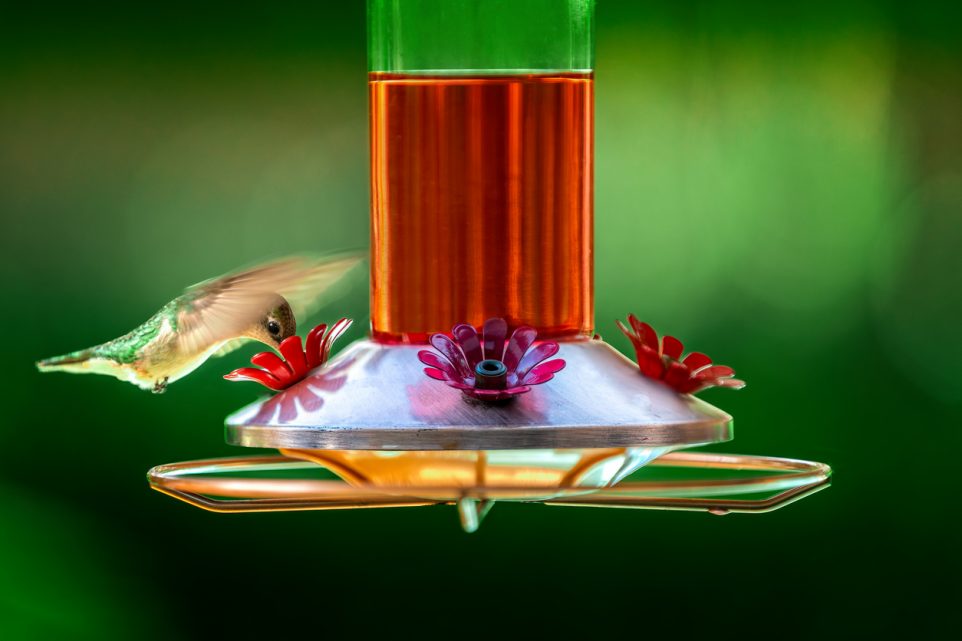A Step-by-Step Guide for Making Homemade Nectar

It’s no secret that hummingbirds love to drink nectar. They’re constantly fluttering around and looking for the sweetest nectar they can find. But, did you know you can make your own homemade nectar for these gorgeous birds? With the right ingredients and a few simple steps, you can set up a delicious feeding station that will draw the birds to your backyard.
In this post, we’ll provide you with a step-by-step guide for making the perfect hummingbird nectar at home. We’ll explain what ingredients to use and how to mix them for optimal results. Plus, we’ll give you helpful tips on how to attract hummingbirds by placing your hummingbird feeder in the perfect spots.
Gather Your Supplies
Container
You will need a container for mixing and storing your hummingbird nectar until it’s ready to serve. A plastic pitcher or jar with a lid is ideal, but any type of bowl or cup that can be covered and air-tight will work.
Water
Tap, filtered, or spring water are all suitable options for making your homemade nectar solution. Avoid using distilled water as it lacks minerals that the birds need in their diet.
Sugar
Unbleached cane sugar is best for hummingbirds as it is closest to the natural sugars they eat in nature. Do not use artificial sweeteners or honey, as they can be harmful to the birds.
Hummingbird Feeder
The final crucial supply you need for your nectar project is a hummingbird feeder to share the homemade nectar with the birds. A dedicated feeder for hummingbirds is worth investing in since they are usually designed with several access points and in a shape that’s appealing to the birds.
Making the Nectar
Once you’ve gathered your supplies, you’re ready to start making your homemade nectar:
- Fill your container with two cups of water and bring it to a rolling boil over medium heat on the stovetop.
- Once the water begins boiling, reduce the heat and stir in 1 cup of sugar until it fully dissolves.
- Remove the container from heat and allow the mixture to cool at room temperature until it is no longer hot before moving on to the next step.
Cleaning the Feeder
Before adding the cooled nectar to your hummingbird feeder, you’ll have to ensure it’s clean and safe for the birds to use. Here are some steps to follow for thorough cleaning:
- Carefully empty your bird feeder of any remaining nectar and discard the old nectar in an outdoor trash bin away from your home.
- Scrub the inside and outside of your feeder with hot, soapy water using a bottle brush or sponge. Rinse it thoroughly until all signs of debris are gone, then shake off excess water while allowing the feeder to drip dry in your sink.
- If you can’t air-dry your feeder naturally, you can wipe a soft cloth over the inside and outside of the container to ensure it’s completely dry before refilling it.
Adding the Nectar
Now that you’ve prepared the nectar and cleaned the feeder, you can get it ready for the hummingbirds to enjoy. Fill your bird feeder with the homemade nectar solution you’ve created, making sure not to fill it past three-quarters full as this can cause it to overflow when hung from trees or other supports outdoors.
After filling the feeder, choose a safe place to hang it. Since hummingbirds are active during both day and night, relocate your hummingbird feeder to a safe spot away from predators that might harm them while feeding.
Hanging the Feeder
Once you have chosen a suitable spot to hang your feeder — such as close to flowering shrubs, trees, or other foliage — take note of where you plan on placing it. By marking exactly where to hang it up and take it down, you can reliably put it in the same spot each time without having to search for the exact location again once it’s full or empty.
With a secure loop or string, hang your feeder at least 4 feet off the ground to make it accessible for hummingbirds. To get different vantage points that would provide more safety and flexibility for their feeding, consider hanging multiple feeders in different places around your backyard.
Once you’ve hung your hummingbird feeder, monitor it regularly for any signs of mold, mildew, debris, ants, wasps, or other pests that may try to feed off of your homemade nectar solution. If these signs appear, empty any remaining nectar, clean the feeder thoroughly and refill it with fresh nectar. To ensure that hummingbirds stay safe while feeding in your backyard, it is essential to maintain cleanliness by washing the bird feeders regularly.
Decades of Combined Expertise
Best Buy Guidebook is a culmination of online publishing lessons learned. From SEO to paid ads, our team has experienced the highest of highs and the lowest of lows. Our goal now is simple: Arm readers with the most information possible.
